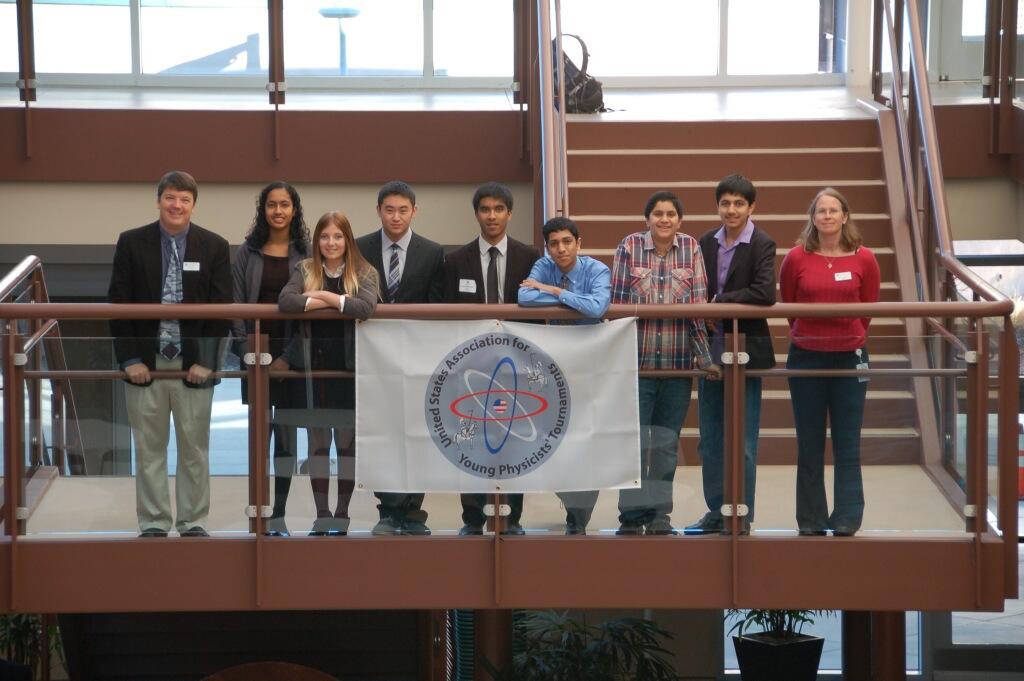Invitational Young Physicists Tournament. The Harker School, the tournament hosts, won the championship. Participating schools in order of finish in the preliminary round include:
Shenzhen Middle School, China
Woodberry Forest School, Virginia
The Harker School, California
Rye Country Day School, New York
Nanjing Foreign Language School, China
Pioneer School of Ariana, Tunisia
Guilderland High School, New York
Georgian English-Spanish School
Pioneer School of Manzeh 8
The Clifford Swartz Trophy for the best poster was awarded to Guilderland High School.
In the semifinals, Shenzhen defeated Rye, and Harker defeated Woodberry. The final physics fight saw Harker narrowly edge out Shenzhen. Harker is the first two-time champion, having also won in 2011.
The 2015 US Invitational Young Physicists Tournament will be held on Jan. 30-31 at Woodberry Forest School in Virginia. If your school would like an invitation to participate, please contact Greg Jacobs, president, USAYPT, via the Woodberry Forest School website.
USIYPT 2015 Problems:
#1 -- Avogadro’s Constant: Measure Avogadro’s
Constant in as many different ways and methods as you can (at least three, more
preferably; the Board knows of approximately twenty methods). Assess the
uncertainties of each method and compare your results.
#2 -- Gauss Rifle: Build and
investigate the so-called “Gauss Rifle” that consists of a sequence of magnets and steel balls placed on a rail
system. Shortly after one ball is rolled
forward at one end of the rail the ball at the other end shoots off with a
large speed. Optimize your design to produce
the greatest speed of the final ball for a rifle length up to 1 meter.
#3 -- Parametric
Resonance: Below are diagrams of two
compound oscillating objects that exhibit
parametric resonance. Build one of these
devices, and observe and explain the subsequent motion. Explain the relationship, if any, with children
pumping their legs on a playground swing.
#4 -- Teapot
Effect, Windowsills, and Drip Kerfs: Recent research results claim to have settled
the physics of the “teapot effect” where a fluid flows around an edge and then
flows along the subsequent surface. Carpenters have defeated this effect for
windowsills by cutting a groove, known as a “kerf”, underneath the edge of
windowsills to prevent rain water from flowing back onto the building under the
sill, and instead drop onto the ground.
Evaluate the recent research, experimentally apply the results to
windowsill drip kerfs, and tell the carpenters where the kerfs should be
created, and to what depth and width to protect buildings from the teapot
effect.




Thanks for an awesome tournament, Greg! Physics teachers from other schools - you should really look into participating in this - it is an amazing experience for both teachers and students.
ReplyDelete